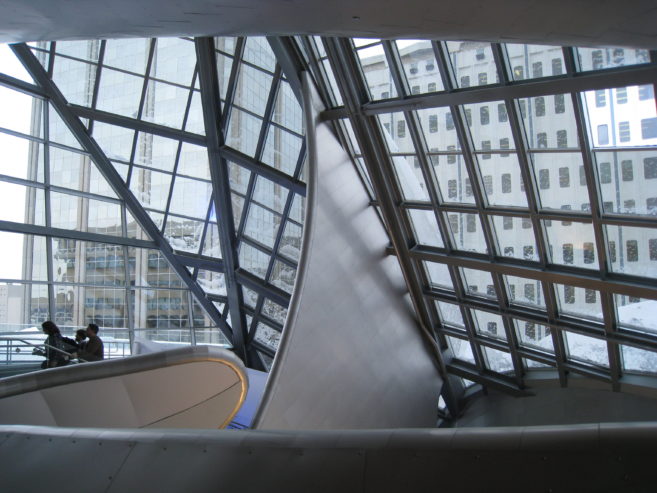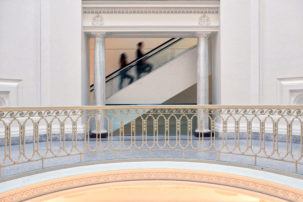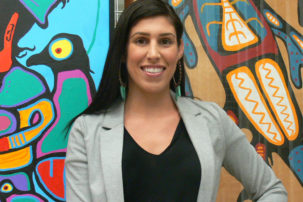Shocking, discouraging, disappointing: Those are just some of the reactions Edmonton artist Preston Pavlis says he had when he heard earlier this fall that the Art Gallery of Alberta, located in his city, had never included a Black artist in one of its biennials.
“I think the biggest thing for me is that this biennial has been going on since 1996, and I was born in 1999,” says Pavlis, who is Black Canadian/American. “So in the entire timespan of this event, which started before I was even born, there has not been a single Black artist shown in the biennial.”
Pavlis has read the September 24 statement from the AGA that admits this bias and vows to do better. He’s also read the media coverage noting that the gallery has exhibited works by Black artists in other solo and group shows over the years, and was committed to doing that in future too.
But Pavlis points out that one annual AGA show of local Black artists, called “5 Artists, 1 Love,” has taken place in the basement for years.
And though the AGA is promising to change that “5 Artists, 1 Love” placement, Pavlis also notes that a biennial carries special weight.
“It‘s very disappointing, because they show 20 to 40 artists every [biennial],” Pavlis notes. “This is supposed to be a survey of art within the province and by actively not including any Black artists at all, it‘s sort of saying we don‘t exist here, which is really kind of discouraging.”
Nasra Adem is founder of Edmonton’s Black Arts Matters. They see the AGA biennial situation as part of a wider systemic issue in the city around Black arts.
“I feel like, as a Black artist, as a child of immigrants, as a Muslim, as a queer person, I sit at a lot of different intersections—and I think it’s time for Edmonton’s professional arts spaces to understand it is actually their responsibility to make their spaces open and welcoming and curious,” Adem says. “It’s their responsibility to be curious about who is in their city, and whose stories are making up their city.”
In Adem’s experience, the professionalized arts scene in Edmonton—across theatre, dance, performance, writing and spoken word and visual arts—has long neglected the richness of the Black arts scene in the city, or delivered contradictory messages about it.
“I was used to be that if we did have Black artists being celebrated or showcased they were coming from Toronto or New York or what have you,” Adem says. “When I was coming up, especially as a theatre artist, the conversation was, ‘Oh well, we just don’t have any Black artists coming to our auditions. Black artists are not here: they all leave and go to Toronto and go to Montreal.’ But there wasn’t really a conversation about why those Black artists were leaving.”
The professionalized and well-funded arts spaces in Edmonton have also neglected the output of the many talented local Black artists who remained, Adem believes.
“I would go to a conference or I would sit on a board,” Adem says, “And I would realize that I could come from a house show on a Friday full of Black artists of all different mediums, and then I would sit on this room on Saturday and the narratives were completely different. And it would frustrate me and disorient me and I would be like, ‘You say we aren’t here—but I was just there last night.’”
“This is supposed to be a survey of art within the province and by actively not including any Black artists at all, it’s sort of saying we don’t exist here, which is really kind of discouraging,” states Preston Pavlis.
Pavlis and Adem aren’t the only artists concerned about this situation.
Amy Malbeuf, a Métis visual artist from Rich Lake, Alberta, and Justin Waddell, associate professor at Alberta University of the Arts in Calgary, both withdrew their work and participation from the current Borderline Biennial—co-presented by the AGA and Saskatoon’s Remai Modern—before it opened on September 26.
“I have withdrawn my work heart from borderLINE: 2020 Biennial of Contemporary Art,” Malbeuf explains a September 25 erratum statement available in the biennial catalogue. “The removal of my work is on the grounds of the Art Gallery of Alberta’s failure to create non-performative relationships with BIPOC artists and the exclusion of Black artists within the exhibition.”
“This lack of relationship building and care exposes the cracked foundations upon which institutions are built,” Malbeuf’s statement continues. “Authentic change will take transparency and accountability. I would like to ask the question, posed by artist Anna Binta Diallo: ‘How will racism be challenged in the arts, beyond performative allyship?’”
Justin Waddell, who identifies as a settler of mixed Nikkei (sansei) and Scottish ancestry, told Canadian Art that “I think it’s really important at this moment, and all the time, that people of colour, white-adjacent people and white people need to have conversations about whiteness and our proximity to whiteness—we need to have conversations to reconcile and actively redistribute the wealth, resources and energy that we have invested in these institutions which we have benefitted from.”
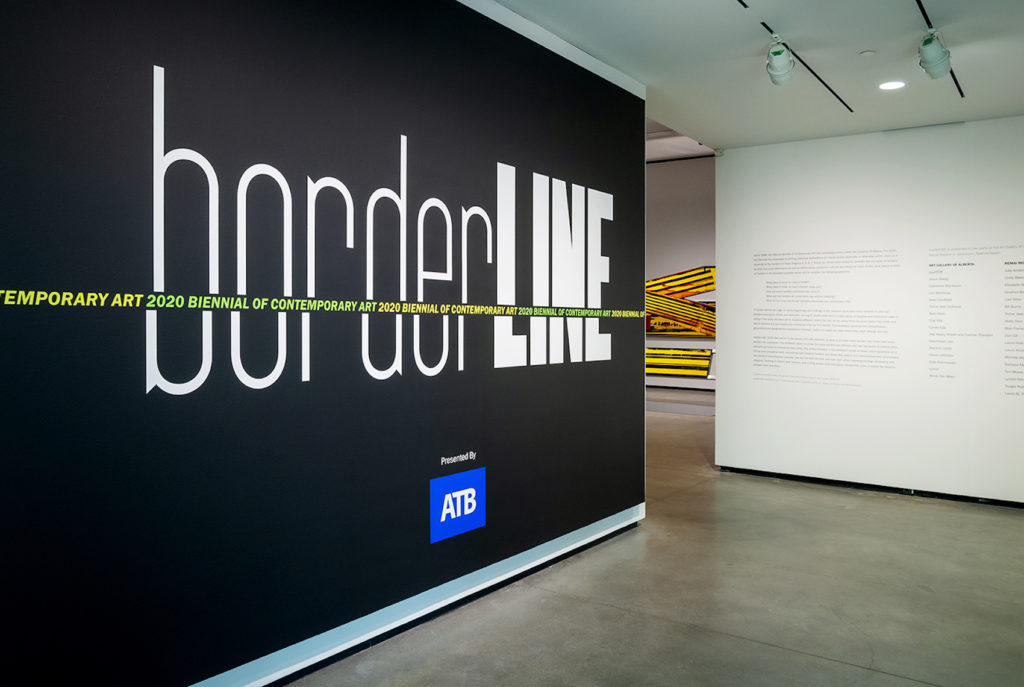 Entrance to Borderline: 2020 Biennial of Contemporary Art at the Art Gallery of Alberta. Photo: Charles Cousins.
Entrance to Borderline: 2020 Biennial of Contemporary Art at the Art Gallery of Alberta. Photo: Charles Cousins.
Some other artists are staying in the biennial, but expressing concern, including Toronto-based artist Thirza Cuthand, a member of Little Pine First Nation who lived on the prairies for three decades.
“Mostly I stayed in the biennial to support the Indigenous curators [of the biennial] and other Indigenous artists in the biennial,” says Cuthand. (The borderLINE: 2020 Biennial of Contemporary was curated by Remai curator (collections) Sandra Fraser, who is of English, Scottish and northern European ancestry; Remai guest curator Felicia Gay, who is Swampy Cree and Scottish; AGA adjunct curator of Indigenous arts Franchesca Hebert-Spence, who is Anishinaabe; and AGA curator Lindsey Sharman, who identifies as a settler person of European descent.)
Cuthand was also in an international biennial last year, the Whitney Biennial in New York, which saw some artists withdraw in protest of Whitney Museum of American Art board member Warren Kanders.
“I think a biennial, just the fact that they engage so many artists in one show or they are more responsible for representing the breadth of the community or the region or the country…. And they are run by such big institutions and they involve so many artists…if somebody’s viewpoint is missing it’s especially obvious,” Cuthand says.
Cuthand says that in addition to seeing more Black artists in the biennial in future, she would like to see a Black curator involved in the next biennial at the AGA.
White settler artist Magnus Tiesenhausen also remains in the biennial show, though he told curators in mid-September he would withdraw if no public statement on the absence of Black artists was issued, and no reparative actions committed to.
“I feel that it is paramount that a public statement regarding this systemic racism be made by the AGA and Remai before the biennial opens,” Tiesenhausen wrote in an email to curators on September 16. “And a statement is not enough; it must be accompanied by a commitment to actions that each institution will enact to start a process of remediation and restoration, with the aim of being more equitable to Black artists in institutional workings and programming decisions in the future. Not only is this an issue of lack of inclusion, but also lack of support; both must be addressed. If this is not a possibility I do not feel that I can in good faith consent to taking part in this exhibition.”
(An AGA spokesperson states that the gallery was already working on public statement of this kind before it received Tiesenhausen’s email.)
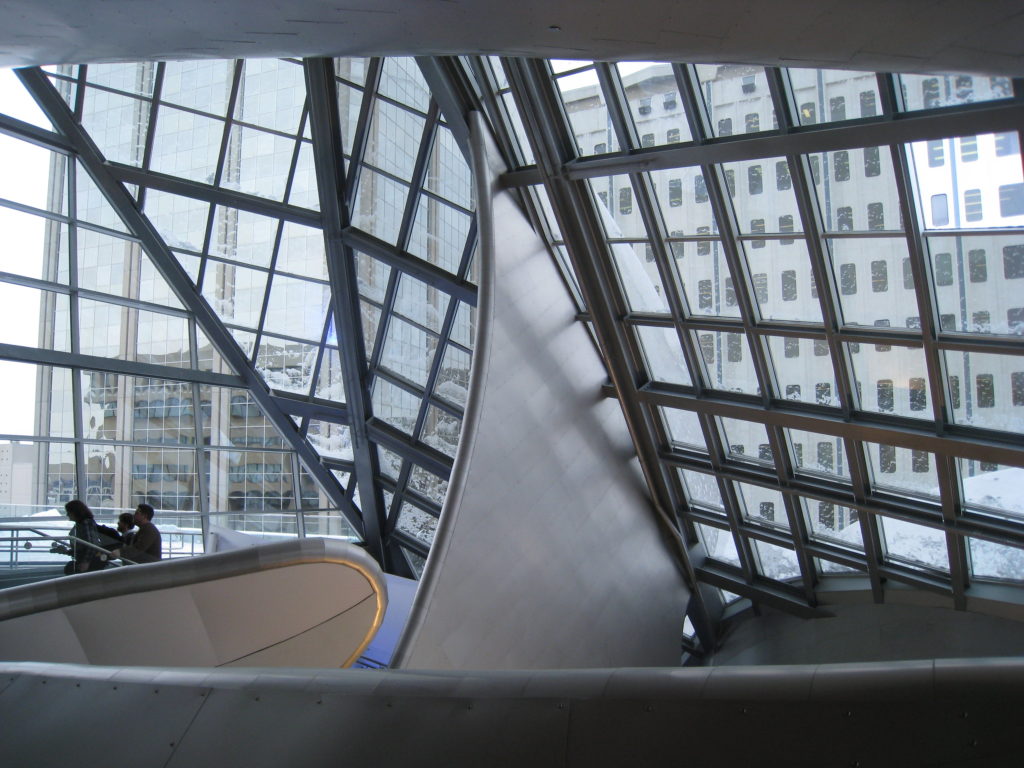 An interior view of the Art Gallery of Alberta. Photo: Mack Male. CC BY-SA 2.0.
An interior view of the Art Gallery of Alberta. Photo: Mack Male. CC BY-SA 2.0.
Art Gallery of Alberta executive director and chief curator Catherine Crowston says she is disappointed in her institution’s track record on this issue.
“We have always been very cautious and conscious in working with the biennial to have gender representation and regional representation,” says Crowston, who identifies as a Japanese Canadian person of colour (specifically Japanese/Scottish-English). “We have always been conscious of having Indigenous artists represented in the biennial as well as representing artists of colour. The representation of Black artists has been an unintentional omission.”
Crowston says the logistics during most of the biennials from 1996 to the present day—often being co- and/or guest curated, always looking only at artists residing in Alberta (rather than connected to the area and living elsewhere), and always starting with applications submitted by artists through a public call—were maybe not supportive of equity and Black representation, in retrospect.
Crowston also says that, as per the equity commitment and action items the gallery issued on September 24, by end of November the gallery will be holding meetings and consultations with BIPOC community members about how to do better.
“I think we have to talk about Black artists in our community and how we can support them,” Crowston says. Among other things, “I want to open a dialogue to discuss what we can do with mentoring and exhibiting and supporting Black artists from elementary school all the way up through university and college and beyond.”
Other actions the AGA Board of Directors have committed to is a new Strategic Plan (2021-2024) “that has anti-racism and equity actions as foundational, transformative goals,” according to the September 24 statement. There will also be “the formation of an AGA Equity Committee, and the creation of a meaningful and organic community outreach plan developed with guidance from external community stakeholders” and “BIPOC artists are included in all upcoming AGA group exhibitions of contemporary art in 2020 and 2021.”
The next biennial at the AGA, due for 2022, has also been postponed “to give time for the careful work that is needed to create equitable structures for its future formation and curation. Over the next year, in addition to the roundtable discussion with BIPOC artists, the AGA will be hosting open public forums to discuss the past and potential future of the Biennial, to learn from our community and set a new direction,” says the September 24 public statement.
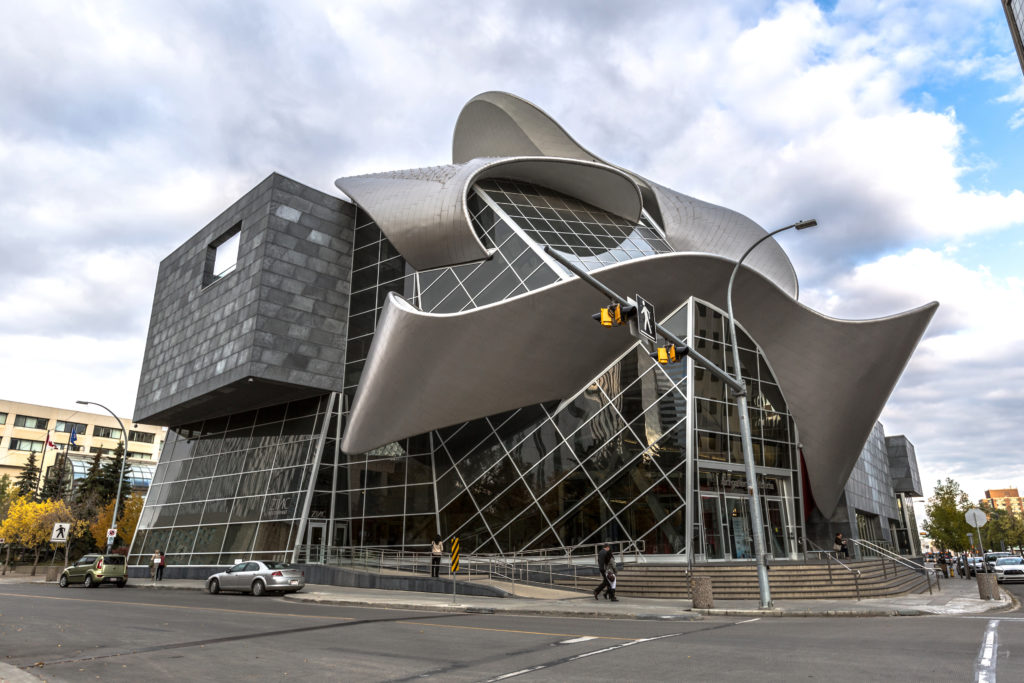 An exterior view of the Art Gallery of Alberta. Photo: IQremix. CC BY-SA 2.0.
An exterior view of the Art Gallery of Alberta. Photo: IQremix. CC BY-SA 2.0.
Swampy Cree/Scottish curator Felicia Gay, who helped organize the 2020 biennial, said she was drawn to do so because of the way the biennial, for the first time ever, was changed to look beyond provincial borders and acknowledge treaty lands.
“When the Biennial, in early 2019, proposed to open up its colonial borders and gave up space to territory it meant something to me,” Gay says. “The institution gave up title of land, so to speak. That meant something to me as a Swampy Cree woman who happens to be a curator, it meant something to be invited to share creative space with other women, where white men usually reside.”
At the same time, Gay sees the need for solidarity.
“It was important to all of us [biennial curators] to advocate space for Indigenous artists to ensure that our people were a central part of the narrative,” Gay states. “Now that we know that more work needs to occur, we are all witnesses to it: we all have to decide how to support each other for a just society.”
According to Black artists in Edmonton, there is definitely more work to be done at the AGA and elsewhere.
“This case with the AGA is egregious, but you will find similar things in programming, staff and boards in galleries across the city and the entire province,” Preston Pavlis observes.
When asked what faith he has in the AGA to follow through on its stated equity goals, Pavlis responds, “While I do feel it is a step in the right direction, it‘s really coming at a strange time. Because if it wasn‘t for the mass awakening around race this year, and them being called out, I don‘t think they would have come to that ‘realization‘.”
“People love to think that racism ‘happened,’” Nasra Adem of Black Arts Matters concludes. “Yes, it ‘happened’ but it’s also a systemic problem and Edmonton is definitely not exempt from that at all.”
Accordingly, Adem and their Black Arts Matters team are now moving from a festival model to “mentoring, training, facilitation, healing arts work—really thinking about what does it mean to sustain artists of colour and recognize the historical barriers that have existed—and that the historical barriers that exist are also present barriers.”

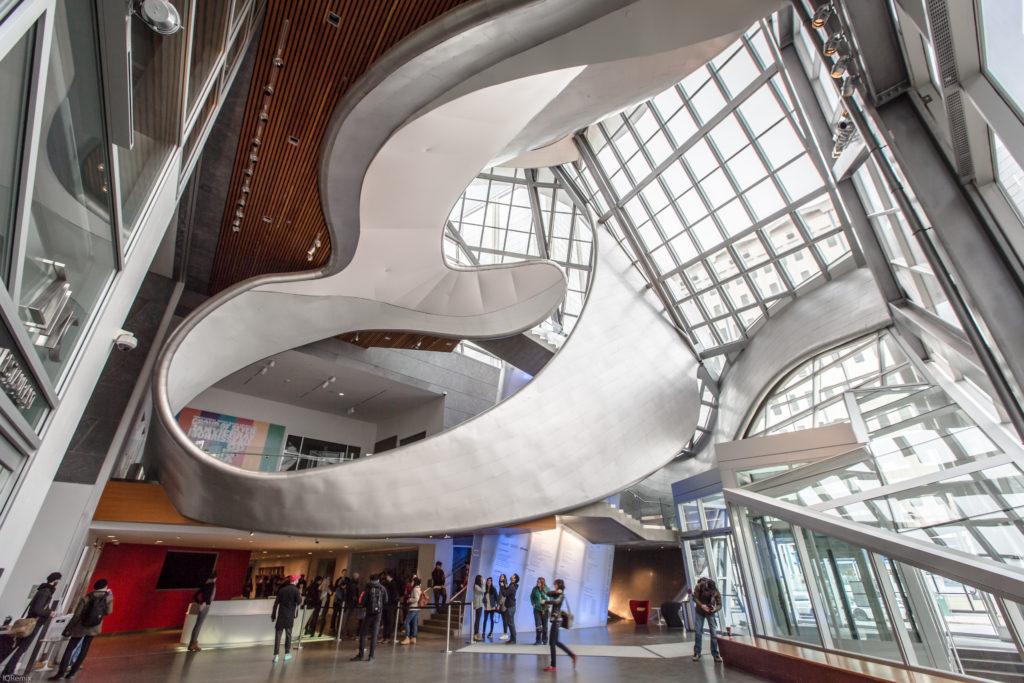 Inside the entrance of the Art Gallery of Alberta. Photo: IQremix. CC BY-SA 2.0.
Inside the entrance of the Art Gallery of Alberta. Photo: IQremix. CC BY-SA 2.0.
